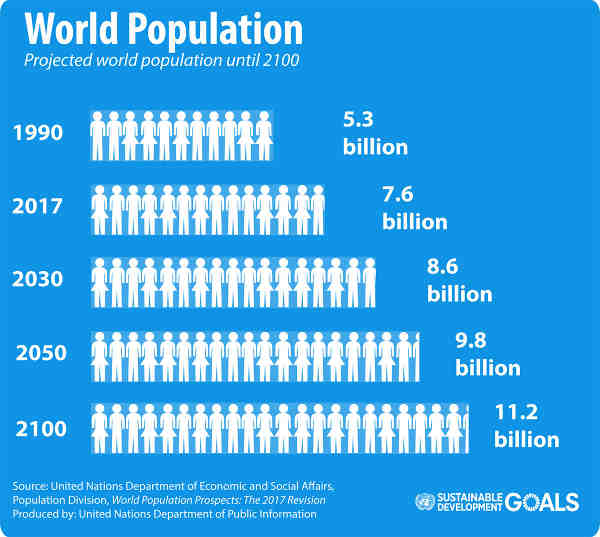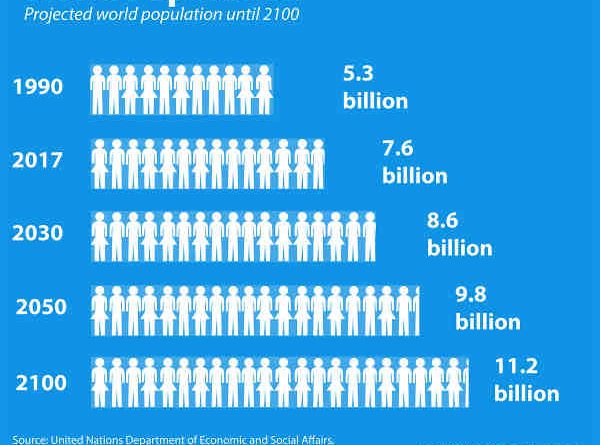World Population to Hit 9.8 Billion by 2050

The world population is now at least 7.6 billion, up from 7.4 billion in 2015, the United Nations (UN) reported on Wednesday.
The concentration of global population growth is in the poorest countries, according to World Population Prospects: The 2017 Revision, presenting a challenge as the international community seeks to implement the 2030 Sustainable Development Agenda, which seeks to end poverty and preserve the planet.
“With roughly 83 million people being added to the world’s population every year, the upward trend in population size is expected to continue, even assuming that fertility levels will continue to decline,” said the report’s authors at the UN Department of Economic and Social Affairs.
[ How India Plans to Control Its Population Growth ]
At this rate, the world population is expected to reach 8.6 billion in 2030, 9.8 billion in 2050 and surpass 11.2 billion in 2100.
The growth is expected to come, in part, from the 47 least developed countries, where the fertility rate is around 4.3 births per woman, and whose population is expected to reach 1.9 billion people in 2050 from the current estimate of one billion.
In addition, the populations in 26 African countries are likely to “at least double” by 2050, according to the report.
[ Humanitarian Crisis Persists at DPS Housing Society in Delhi ]
That trend comes despite lower fertility rates in nearly all regions of the world, including in Africa, where rates fell from 5.1 births per woman from 2000-2005 to 4.7 births from 2010-2015.
In contrast, the birth rate in Europe was 1.6 births per woman in 2010-2015, up from 1.4 births in 2010-2015.
“During 2010-2015, fertility was below the replacement level in 83 countries comprising 46 per cent of the world’s population,” according to the report.
The lower fertility rates are resulting in an ageing population, with the number of people aged 60 or over expected to more than double by 2050 and triple by 2100, from the current 962 million to 3.1 billion.






